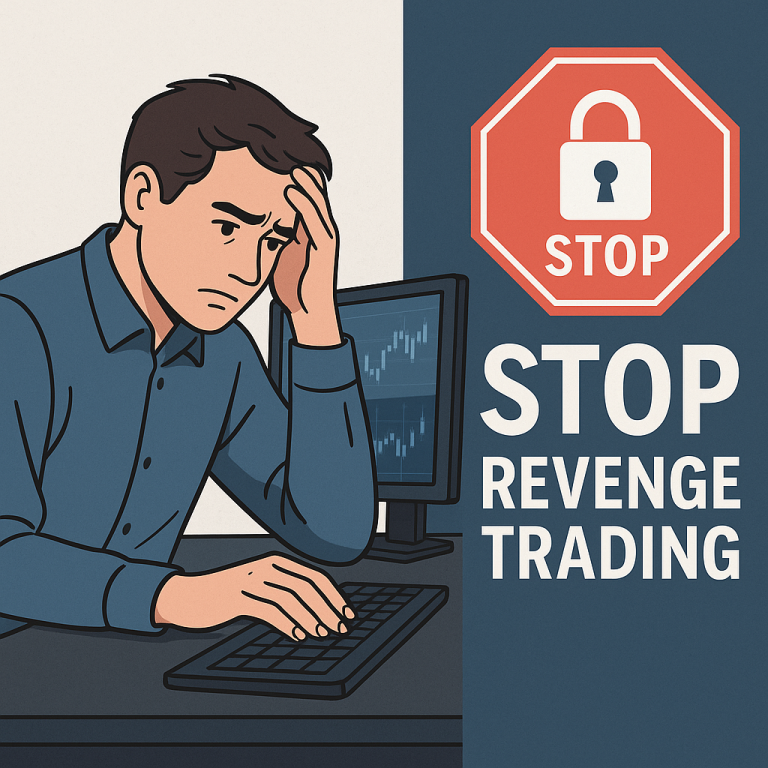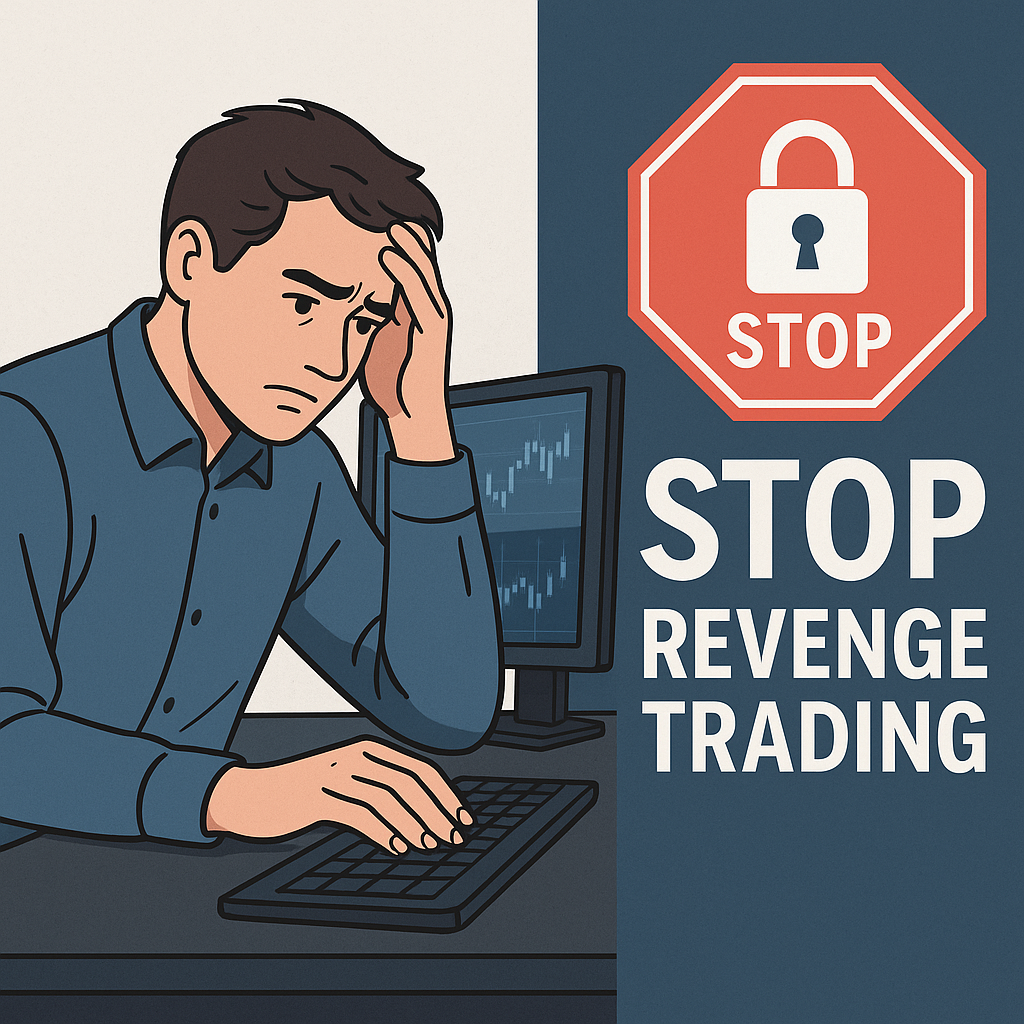The Psychology of Revenge Trading: Why Traders Chase Losses and How to Stop
09/03/2025

Why Revenge Trading Is So Dangerous
Every trader has been there. You take a loss, frustration builds, and suddenly you find yourself jumping back into the market – not because the setup was right, but because you need to win it back. This is revenge trading, and it’s one of the fastest ways to drain an account.
The worst part? It feels logical in the moment. Your brain convinces you that recovering your loss immediately will make everything right again. But in reality, revenge trading leads to bigger losses, emotional spirals, and sometimes the end of a trading career.
So why do traders fall into this trap? And more importantly – how can you stop it?
The Psychology Behind Revenge Trading
Revenge trading is fueled by deep psychological triggers. Understanding them is the first step to controlling them.
1. Loss Aversion Bias
Humans feel the pain of losses twice as strongly as the pleasure of gains. When you lose $500, your brain feels it like losing $1,000. This creates an overwhelming urge to erase the loss quickly.
2. Ego and Identity
Traders often tie their self-worth to their performance. A losing trade feels like a personal failure. Revenge trading is the ego’s attempt to “prove” you’re still right.
3. Adrenaline and Dopamine Loops
Trading is exciting. Losses trigger stress hormones like cortisol, while quick wins trigger dopamine. After a loss, your brain craves the dopamine hit of a win – and pushes you into impulsive trades.
4. The Gambler’s Fallacy
“I just had three losing trades, so the next one must be a winner.” This flawed logic drives revenge trading. Markets don’t care about your streak.
Real-World Example
Imagine a futures trader who loses $300 on the NQ during the morning session. Frustrated, they double their position size in the afternoon to “make it back.” One impulsive trade turns into three. By the end of the day, the account is down $1,500.
The original mistake wasn’t the losing trade. It was the emotional reaction that followed.
Why Willpower Alone Doesn’t Work
Many traders think, “I’ll just try harder to control myself.” But psychology research shows willpower is unreliable under stress. After losses, your logical brain (prefrontal cortex) shuts down, and your emotional brain (amygdala) takes over.
This is why so many traders repeat the same mistakes. Without external structure, discipline crumbles.
Proven Strategies to Stop Revenge Trading
Here’s how to break the cycle – with both psychological techniques and practical tools.
1. Set Session Limits
Decide in advance how many trades you’ll take, your risk per trade, and when you’ll stop for the day. Once you hit that limit, step away. Structure prevents emotional decisions.
2. Use Delays and Cooldowns
When you feel the urge to jump back in, force a pause. Even a 5-minute cooldown can be enough to let emotions settle. Tools like TradeStop build this in automatically.
3. Trade Smaller After a Loss
Instead of doubling down, cut your position size in half. This protects your account and lowers emotional intensity.
4. Journal Your Emotions
Right after a loss, write down how you feel. Angry? Frustrated? Anxious? Labeling emotions reduces their power. Over time, you’ll see patterns and know when you’re vulnerable to revenge trading.
5. Use Trading Discipline Software
Apps like TradeStop enforce discipline by:
-
Blocking broker access outside scheduled sessions
-
Requiring cooldowns before overrides
-
Logging all attempts to break rules
This removes temptation when emotions are at their highest.
6. Reframe Losses as Business Expenses
Every business has costs. Losses are simply the cost of doing business as a trader. Instead of fighting them, accept them as part of the process.
Long-Term Mindset Shift
Stopping revenge trading isn’t just about tools – it’s about identity. The most successful traders don’t see themselves as gamblers or thrill-seekers. They see themselves as disciplined risk managers.
Ask yourself:
Do I want to look right today, or do I want to be profitable over the long run?
Am I treating trading as a profession, or as an emotional outlet?
The answer will determine your future.
Key Takeaways
Revenge trading is driven by loss aversion, ego, dopamine loops, and faulty logic.
Willpower alone won’t save you – you need structure, rules, and tools.
Practical fixes include session limits, cooldowns, journaling, and trading discipline software.
Shifting your mindset from “chasing losses” to “managing risk” is the ultimate solution.
Conclusion
Revenge trading is the silent account killer. It preys on your emotions, tricks your brain, and pushes you into trades you’d never take under calm conditions.
The good news? You can stop it. By understanding the psychology, setting clear rules, and using tools like TradeStop, you build a safety net against your own impulses.
In trading, discipline isn’t optional. It’s survival.

